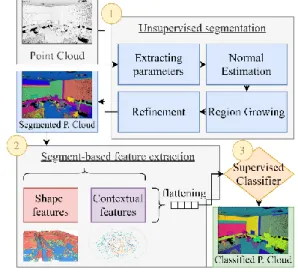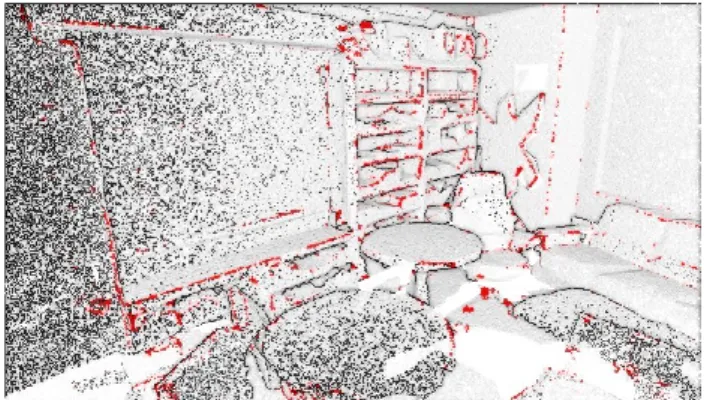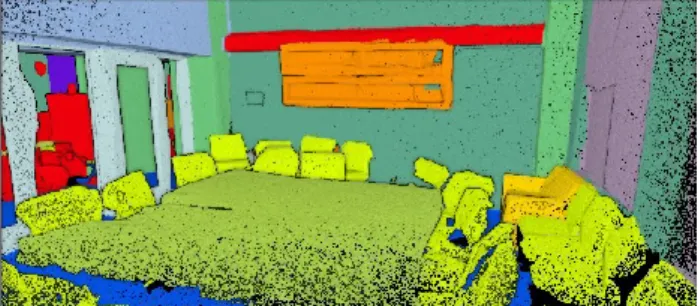Unsupervised segmentation of indoor 3D point cloud: application to object-based classification
Texte intégral
Figure




Documents relatifs
Paris-Lille- 3D: a large and high-quality ground truth urban point cloud dataset for automatic segmentation and classification. ArXiv
on the Ohio dataset show that our method retrieves 99% of the objects in the detection step, 78% of connected objects are correctly segmented, and 82% of correctly segmented ones
For this, we propose to study semi-supervised Deep Learning-based methods for training automatic IOD classifiers. These methods are a mix of supervised and unsupervised approaches
The data in Figure 5-11 show the successful implementation of a device which can measure and control the phase difference between two waveguides by using a small
Importantly, this vibration corresponds to an internal rotation about the Pt–N bond, which is in agreement with the expectation that the reaction coordinate that passes through
In this study using animal models (i.e., accelerated-catheter thrombosis, arteriove- nous shunt, and CPB with cardiac surgery), we assessed the clinical applicability of Ir-CPI as
Inspired by the necessity of synthetic plant point cloud datasets for 3D plant phenotyping applications, we propose a general approach to sample points on the surface of virtual

